The people behind India's first sign language dictionary
- Published
What speaking in Indian sign language looks like
India is soon to publish its first sign language dictionary. BBC Hindi's Divya Arya meets the people behind a unique initiative.
Apart from a few clicks on computer keyboards and the routine shuffling of paper, it is very quiet at this office in the capital, Delhi. A group of 15 people here are working on the massive task of compiling more than 7,000 signs that deal with words used in academic, medical, legal, technical and routine conversations by deaf people in India.
The group is a mix of speech and hearing impaired, deaf and non-disabled people. However they all communicate with each other in sign language.
Sign language has evolved in India over the last 100 years, but the government has only now decided to codify it in the form of a dictionary.
Once completed, it will translate Indian sign language into English and Hindi, and will be available in print and online editions.
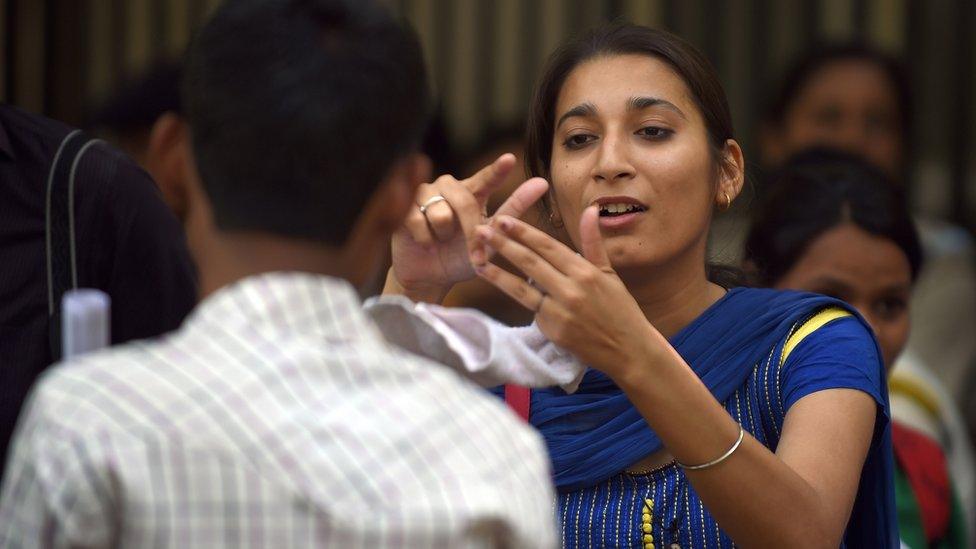
There is a lack of awareness about sign language in India
'Lack of awareness'
Andesha Mangala, assistant professor at the government-funded Indian Sign Language Research and Training Centre (ISLRTC), said it was important to compile the dictionary.
"Indian sign language is very scientific and has its own grammar, but lack of awareness has meant that many deaf people are not even aware of institutions where they can learn it and equip themselves for public communication," she said.
According to the latest census, India has five million deaf and hearing impaired people.
But the country only has about 700 schools which teach sign language. And unlike English or Hindi, it is not written.
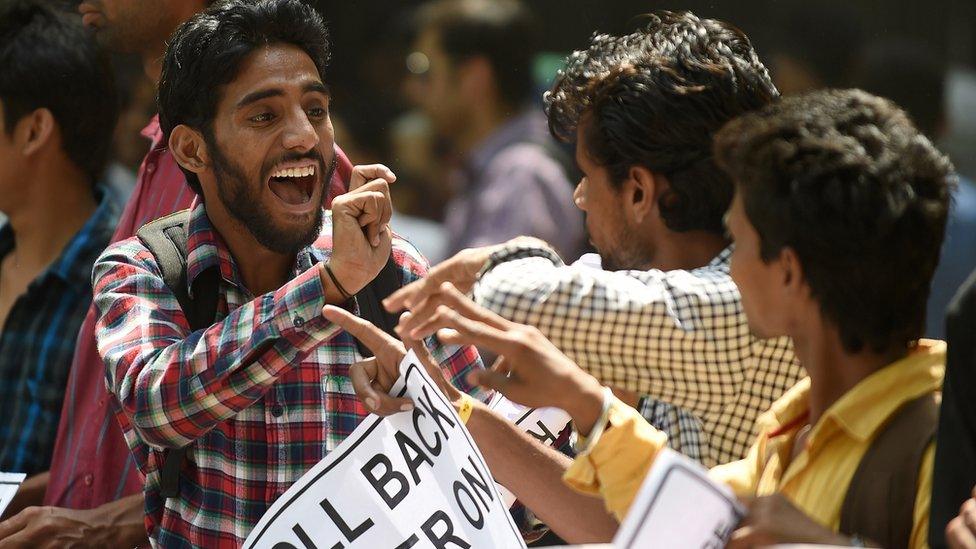
Sign language has evolved in India in the past century
So, while it works for inter-personal communication, the wider lack of knowledge of sign language means that deaf people have to become proficient in languages they have never heard or spoken.
Islam Ul Haq, a master trainer in sign language, has been deaf from birth and does not speak.
"When we don't hear or speak a language, we don't understand its grammar and syntax. For us communicating ideas is enough," he told the BBC through an interpreter.
For example, to say "this food is good", the signs required are only for "food" and "good", but if this were to be communicated in spoken or written English, one would need to know that "food" is a noun and "good" is an adjective, not to mention the role of "this" and "is" in a sentence.
The dictionary aims to help in developing this "bilingualism" and grammar.
Variations
British and American sign language dictionaries are an important reference point for the dictionary, but signs used by deaf people in India are very different because of their cultural, geographical and historical context.
Simple signs that are used to denote common terms such as "marriage" or "tea" are not the same world over.
While the action for "wearing a ring" denotes "marriage" in the US, in India it is depicted by the "holding of hands".
"Tea" is shown through the action of "dipping a tea bag in a cup" in the US, but in India, you would actually mime the action of drinking tea from a cup and saucer.
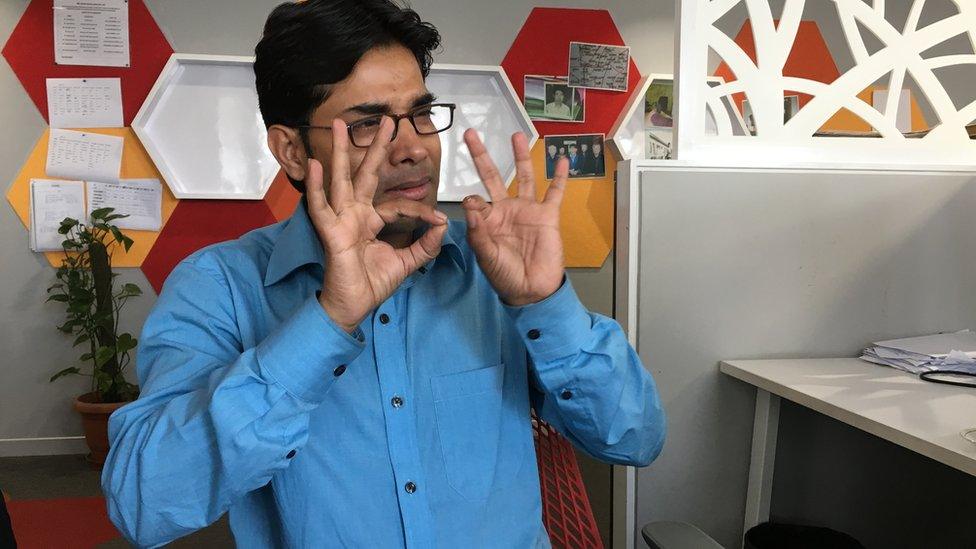
Islam Ul Haq is helping in the compilation of the dictionary
Every sign in the Indian dictionary will be accompanied with a photo illustration and information about the usage of the corresponding English and Hindi word.
ISLRTC experts also had to work hard to take into account, the regional variations of sign language in India.
Not only can one word can be gestured by different signs in different regions, one gesture can mean completely different things in two places.
"If you make the "crossing arms with clenched fists" sign, in some parts of southern India, it denotes 'marriage' whereas in some northern regions it signifies 'jail'," said Mr Haq.
So the standardisation of signs is an extremely important part of the dictionary-making exercise.
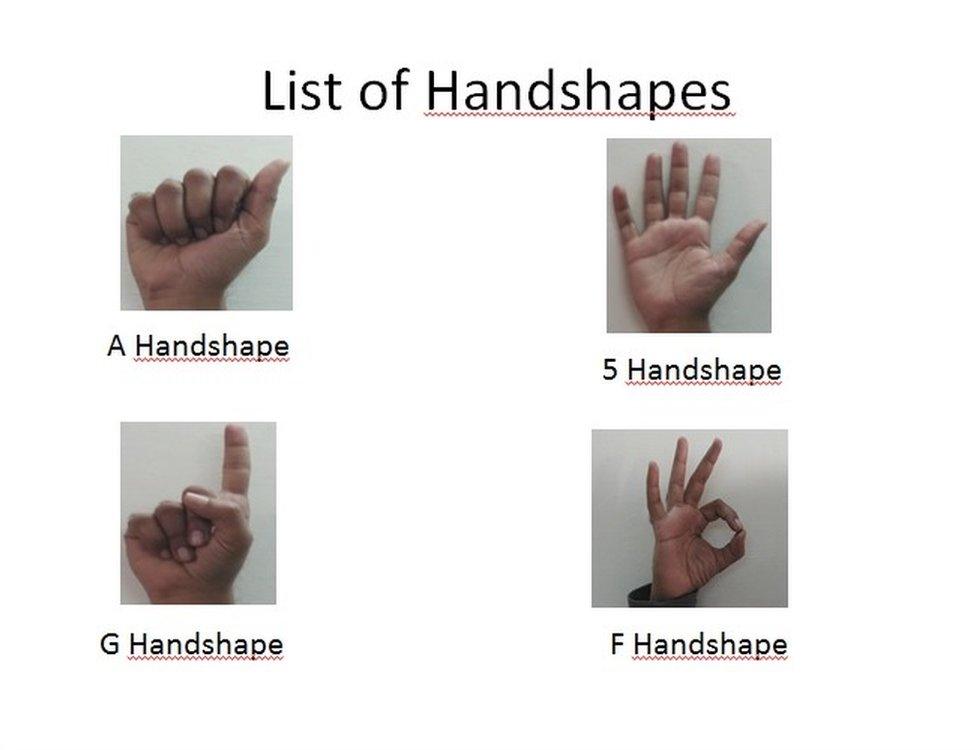
The dictionary has pictures and illustrations
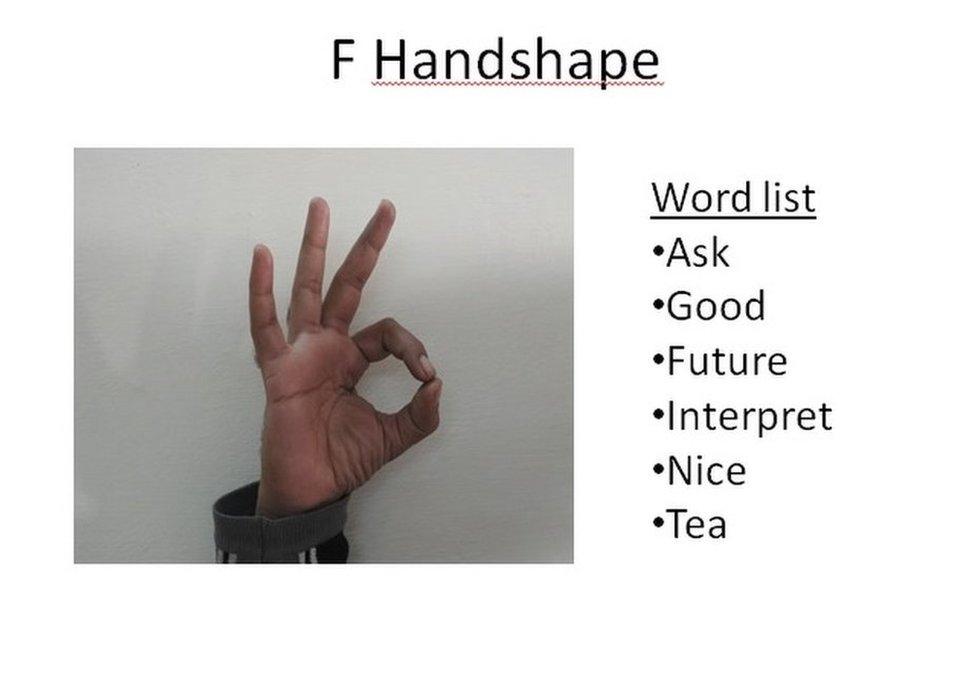
The government wants sign language to be taught in every school
Avnish Kumar Awasthi, a senior bureaucrat at the Ministry of Social Welfare, said the dictionary was the government's first step towards creating awareness about India's sign language.
"Lack of knowledge of sign language in our country has meant that deaf people drop out of the education system rapidly, and despite quotas in government jobs, they are unable to benefit from them," he said.
Mr Awasthi also wants to make sign language training compulsory for teachers to ensure that deaf students can study alongside other children in regular schools.
Mr Haq's face lights up at the possibility.
"When I travelled to Sweden, the cashier at McDonalds used sign language to take my order. That level of communication would be a dream come true here in India."